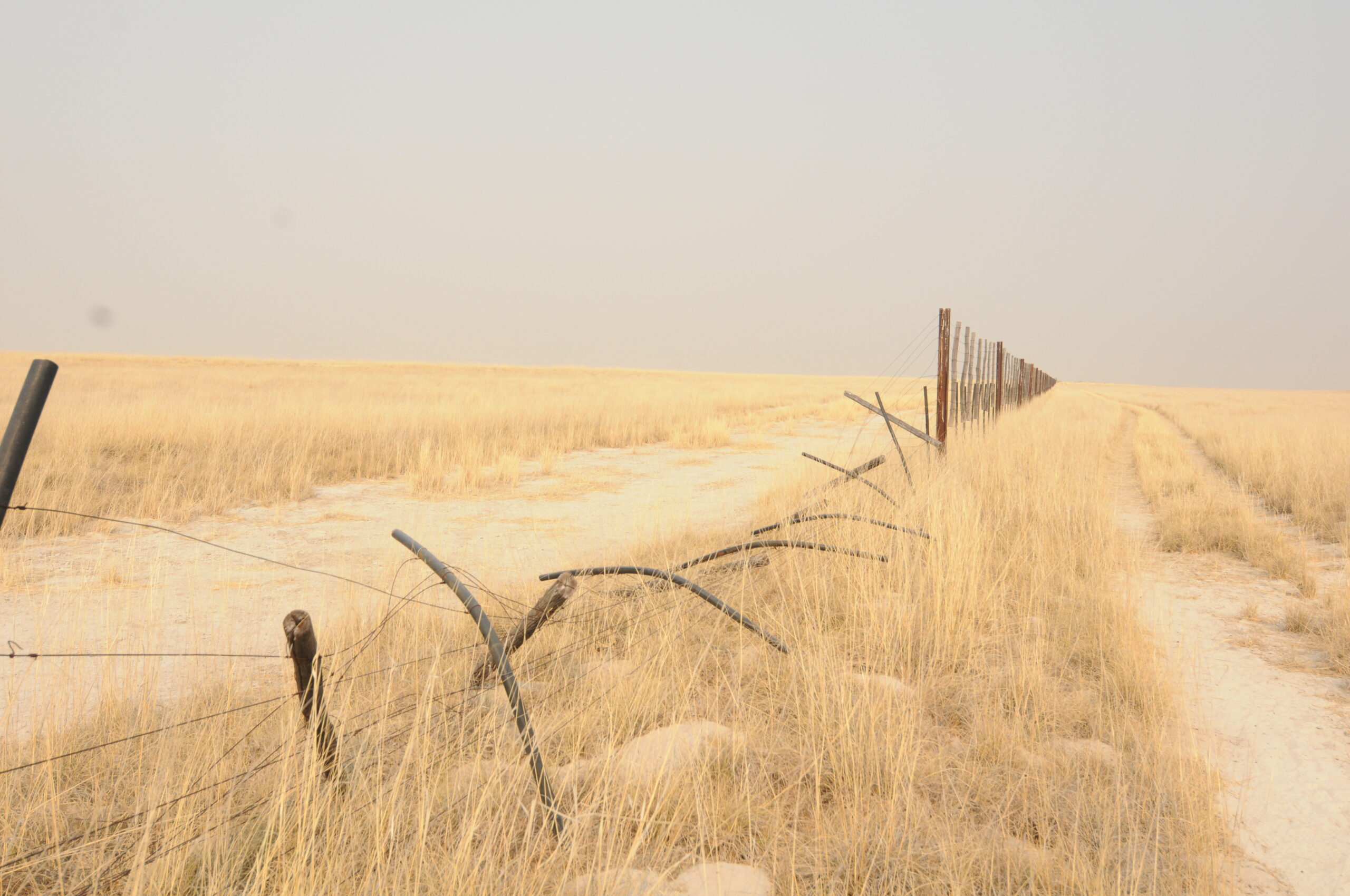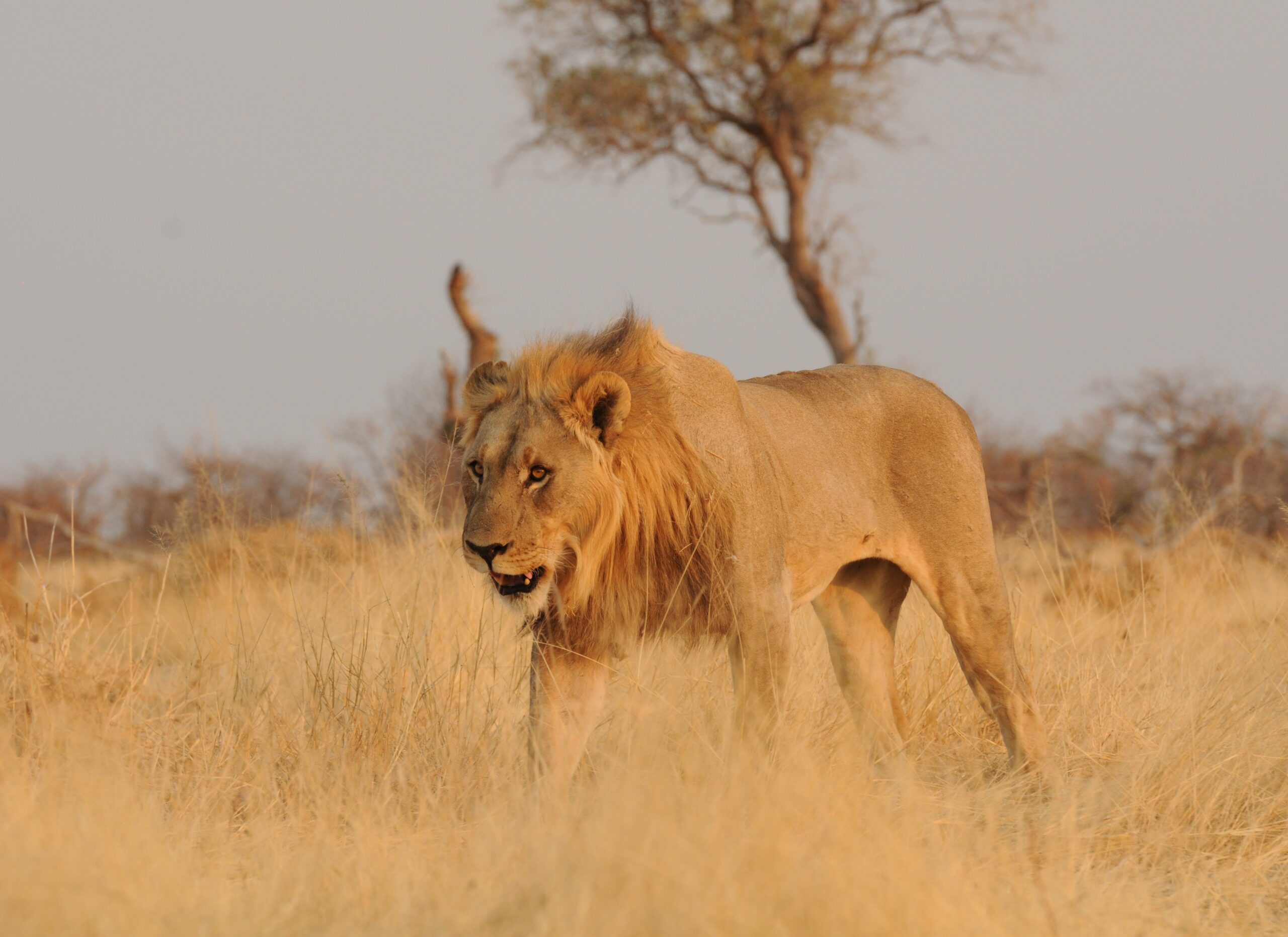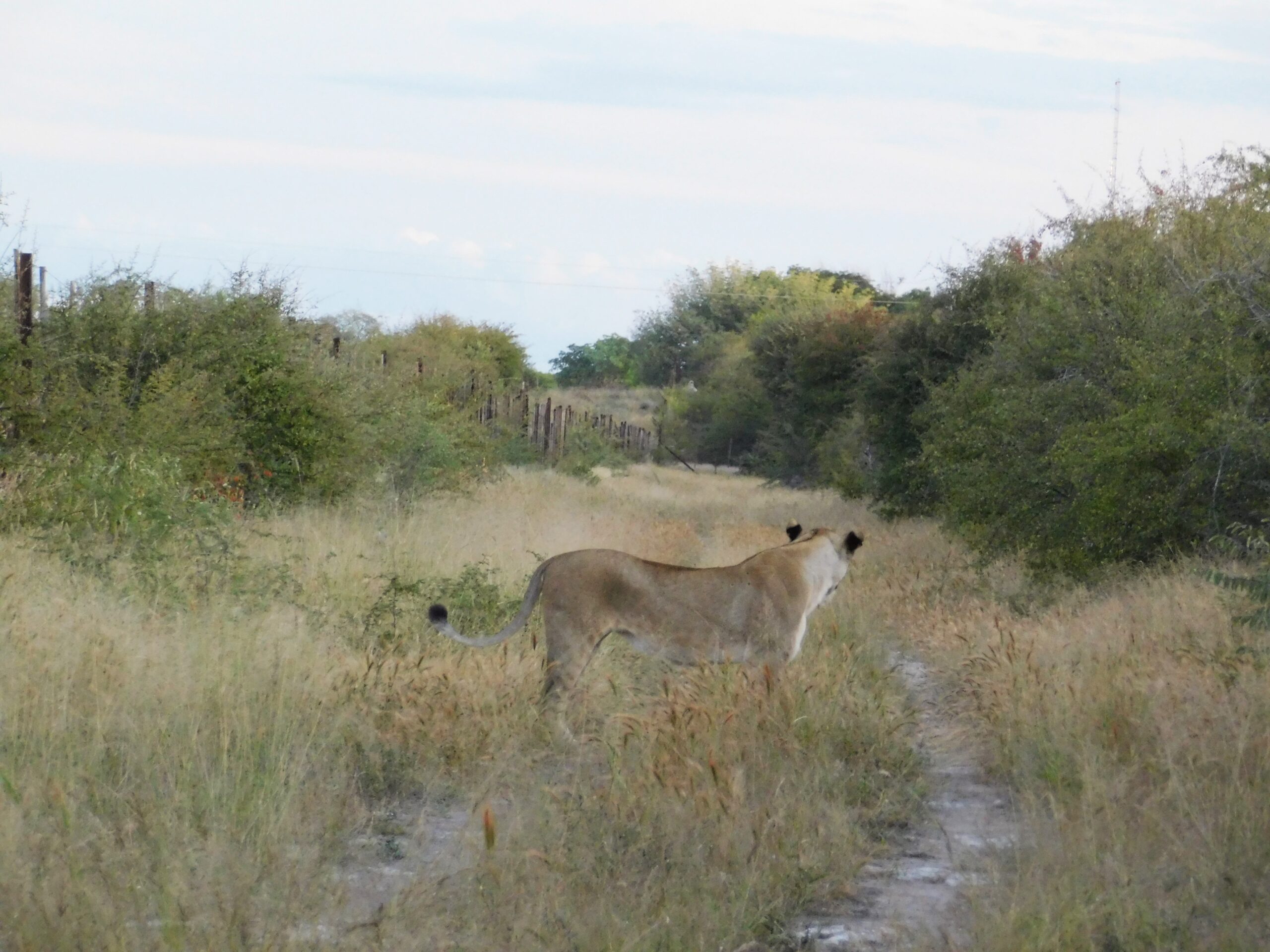Can fences hold back nature?
A look at wildlife movement patterns in African Carnivores
by Katrina M. Ford

How do fences affect wildlife movement patterns? This question has been trending in wildlife management for decades. From mountain lions in Los Angeles crossing freeways to fences in our own backyards repelling deer, wild pigs, and squirrels, how do human-made barriers affect wildlife?
James Beasley, a professor with the University of Georgia Savannah River Ecology Laboratory and the Warnell School of Forestry and Natural Resources, along with a team of international collaborators, investigated this topic in large carnivores in Etosha National Park in Namibia. Beasley and his lab focused on the movements of hyenas and lions within the national park. Unlike national parks in the United States, many parks in southern Africa are fenced.
The 824 kilometers (512 miles) of fencing around the park is constantly bombarded by weather, large herbivores such as elephants, and activities from other animals such as badgers and hyenas digging under the fence. All incidents added together create challenges to ongoing fence maintenance.
Over 14-year period tracking 89 lions and 22 hyenas using GPS-radio collars, the study found that fences restrict the movement of large carnivores, and crossings largely happened at night. However, results revealed that the fence was permeable. Lions and hyenas had home ranges both inside and outside the perimeter of the park and often crossed. Hyenas were twice as likely to cross the fence as lions.
This study and similar ones allow researchers to understand how fences affect the movements of large predators. “This research furthers our understanding of the drivers of conflicts with humans, which is a critical step in developing long-term conservation plans,” Beasley states.
Human-wildlife conflicts

According to the International Union for Conservation of Nature (IUCN), there are currently between 23,000 to 39,000 lions left in the wild. This number has declined from 100,000 lions just 60 years ago.
Carnivores are routinely killed due to conflicts with people. From 1975 – 2017, an average of 20 lions were reported to have been lost yearly to human-carnivore interactions surrounding Etosha.
There has been a long-running problem with carnivore-human conflict. As stated in a 2018 study by Goelst, the majority of conflicts occur on commercial farms on the southern periphery of Etosha National Park.
Lions and other predators often leave the park through gaps in the fencing as they look for food or mates. The study found of the lions that had territories near the fence, 92% of males and 85% of female lions had territories near the edge of the park and crossed the fence. Most of the lion crossings occurred in the vicinity of commercial livestock farms, private game reserves, and wildlife concession areas.
“The substantial losses of lions and other large carnivores in areas surrounding national parks is a major conservation challenge, particularly given the extensive global declines of these species,” Beasley states.
A peaceful coexistence is possible but will take time

Tracking the movements of carnivores allow researchers to lay the groundwork for future conservation efforts. This is the first of several studies designed to ultimately create resources that assist local communities in creating ways that wildlife and humans can exist together.
“To address this issue in a way that is sustainable in the long-term, we first need to better understand the underlying factors contributing to large carnivore movements between protected areas and landscapes dominated by human land use, as well as the factors contributing to conflicts once predators leave the parks,” Beasley adds. All of this takes time, resources, and communities working together to create solutions that will work for conservation efforts and farmers.
In addition to the University of Georgia, this study involved Dipanjan Naha, postdoctoral researcher from the Beasley laboratory and the Ongava Research Centre, Stephanie Periquet, researcher with the Ongava Research Centre, researchers with the Etosha Ecological Institute, and the Namibian Lion Trust.
